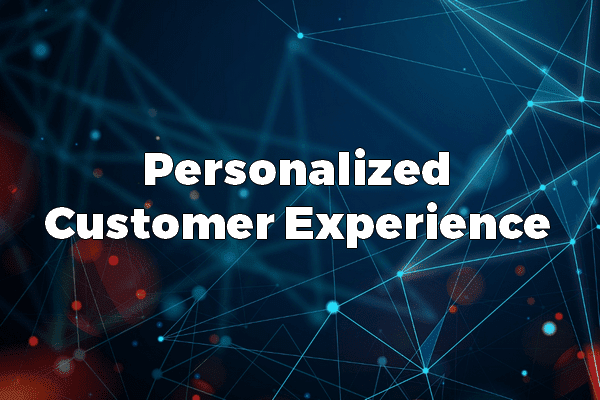Most customer relationship managers and contact center owners strive for the objective of addressing each client personally, rather than to a customer base as a whole. Personalized customer experience, while simple to describe, poses a far more difficult issue when it comes to applying it to the customer’s everyday connection with the business.
What are the key levers available today for a more customized customer connection? Why should businesses prioritize this goal? And how can technology reach expectations for contact center owners?
The layers of Personalized Customer Experience
The personalization of the customer relationship is described as a practice that should be modified in order to properly greet the client, on the phone or on any communication channel. It is necessary to become acquainted with the customer’s profile in order to identify as many of their expectations and desires as feasible. To fulfill the demands of those customers who’ve gotten more demanding over the years, a more personalized approach is necessary.
How to Personalize the customer Interaction? Whether it is the supervisor, customer adviser, or telemarketer, here are some suggestions to follow:
Know your consumers inside and out
Collect the necessary information about your consumers so that you may connect with them more effectively. For example, to properly make contact, begin the call by stating his or her name. Furthermore, your success is dependent on your interactions with customers in order to improve your company’s image. Once you’re familiar with your CRM and your caller, you’ll be able to handle challenging calls and manage your tension on the phone effortlessly.
Make an excellent first impression
The agent should have a lively and polite tone! This is essential for effective customer communication. There is no magic to accomplishing this; it all comes down to the mechanics of making and receiving calls. Begin straight away with your name and the company’s presentations.
Also, agents should avoid the classical “Hello,” which immediately freezes discussion. As they must concentrate entirely on the call and avoid keeping your client waiting.
Always offer your consumers a choice
In the customer service business, being attentive to your caller is the most successful method. However, don’t forget about your consumer. Agents must Allow them to make their own decisions, this is how they can adjust to their requirements and establish a long-term trusting relationship.
Create trust between your contact center and your customer.
Agents should be more attentive to your consumers and constantly listen to them by personalizing your customer service and observing the caller’s behavior. Listen to their personal narrative, everyday adventures, development, and desires. Respond as you converse with your consumer. During a conversation, you must support, encourage, and assist them as much as you can. This is how you respond to a portion of the question: how do you personalize your customer relationship?
Make an effort and act quickly
Agents must have the appropriate gestures and reactions to truly personalize the client connection. Sending messages of recognition strengthens your contact center connection with your customers. Agents can thank the consumers for their purchases.
After you’ve analyzed your consumer data, try to anticipate their wants and requirements so agents can surprise them every time. Also, create a pleasant and attractive welcome message that piques the customer’s interest in purchasing. To maintain your customers’ and prospects’ confidence, personalize your scripts by piquing their interests.
What are the benefits of personalizing the client experience?
A client-centric approach, by definition, necessitates a considerable investment from the business and its workers, and an internal federation around this sort of customer strategy can be difficult. So, what’s the point of personalizing the client relationship? In practice, businesses that rely heavily on customization will quickly see the following benefits:
- Personalized communication efforts provide a greater level of profitability, increased conversion rates, and ROI. Clients are more likely to subscribe to a service or purchase a product if they feel more welcomed.
- When a client feels identified as an individual, he is more inclined not only to buy but also to add items to his purchased products or services. This will dramatically boost your income per customer as well as your conversion rate.
- The primary motivator of client loyalty is the personalized customer experience. A client is more likely to build an ongoing engagement with a brand if he perceives that the interaction is not a one-way path.
As a corollary to the preceding statement, when a contact center makes a concerted effort to personalize customer interactions, the degree of consumer involvement skyrockets. This will create a community of consumers who are deeply interested in the brand’s life and news, as well as true ambassadors who will capitalize on the word-of-mouth and social media impact.
However, don’t forget that we live in the digital era and you can’t just rely on the human efforts of your agents to accomplish a perfect personalized customer experience. In that regard, there are several technical solutions available today to create a client customization strategy. The bulk gathering and fine-tuning of consumer data (big data) can open up new possibilities in the field of predictive analysis, allowing smart data to intelligently anticipate the client’s next requirements.
CTI brings a faster experience to customers
All of the contact centers that have used CTI or Computed Telephony Integration for their customer relations operations are enthusiastic about the time savings it provides. The system does, in fact, allow you to limit calls to save 10 to 20 seconds each time. Given that contact centers tend to shorten calls, CTI lowers call time by roughly 10%.
Thanks to filing feedback, CTI offers a completely different approach and a higher quality of reception. As a consequence, agents are more efficient when it comes to resolving client concerns.
Furthermore, emerging technologies such as e-mail, the Internet, and fax make the system obsolete. In conjunction with other features such as reporting, the CTI enables the production of data that allows for the examination of the relationship between the quality of the call and the time spent on it.
Contact centers can use a monitoring and reporting interface provided by each CTI vendor. Call center managers have access to a program that provides complete information on each employee on all calls made in real time. The CTI provides this capability, which allows you to see the number of calls picked up, the rate of lost calls, the average time of communication, the duration of each break, and so on.
These statistics are gathered for the supervisor so that he may better manage his team by developing a customer-centric strategy based on these indicators. Many businesses of all sizes are already using management software to better manage their client databases. CRM, or Customer Relationship Management, solutions are a component of this.
Many CTI providers now include coupling capabilities that can communicate with CRM and ticketing applications. The capacity of this sort of service to better satisfy the expectations of these organizations is its primary benefit.
The CTI enables customer service agents in organizations to be more efficient. The benefits to the company’s productivity are instantly noticeable, as the positive outcomes are represented in the results, performance, and profitability. However, in order for this to occur, client interactions must also be seen as important activities.
In this regard, CTI integration provides a big benefit. This technology enables and improves the user experience for the consumer. The routing of the call to the caller is simplified, and the caller’s waiting time is decreased. CTI enables many choices to be provided, such as redirecting the client to a premium service, moving prospecting calls to a manager in a certain industry, and so on.
This is the case, for example, with calls to their internet service from customers who, by dialing a generic number, are routed to an agent who has the customer’s file in issue and is better equipped to offer rapid and precise responses. CTI in conjunction with CRM software has increased customer responsiveness and offered a more positive customer experience.
Discover all features, benefits, and capabilities of the Computer Telephony Integration (CTI) in our article.
Customer Knowledge, the core of personalized customer interactions
A modern customer relationship personalization approach relies heavily on information. The depth of consumer data, as well as its relevance and regular updating, are critical elements to consider because they condition the efficacy of your overall approach.
What were your most recent purchases? Has the person on the other end of the phone ever contacted customer support previously, and if so, why? As a result, the concept of customer knowledge, which refers to all data regarding customer-brand interactions, is important.
The gathering and effective management of this data necessitate the use of competent CRM software that can utilize the data created in mass by customer activity to preserve just the important and instantly operational pieces.
Begin by gathering “declarative” data, or information that your clients have willingly supplied, to get to know them better and determine their expectations.
This fundamental client data is the simplest to manage: first name, last name, e-mail address, and phone number are the cornerstones of the customer connection since they allow you to initiate the conversation. Some optional variables, particularly those relating to socio-demographic data, may be useful in refining your client profile and determining their geographical region, for example.
If you wish to gather this information, make the effort to establish sensible and non-intrusive contact points, such as inviting customers and prospects to fill out a form. Create a customer account, sign up for a service, and so on… There are several ways to obtain this information, which will be beneficial in studying your various personas (ideal consumers) in the first stage.
On the other hand, behavioral data, known as “non-declarative data,” created during site navigation helps you to gain a better understanding of your customers: date of last purchase, number of goods purchased, average basket value, frequency of transactions, basket abandonment… All of this data, gathered through CRM technologies, informs us a lot about your consumers’ views regarding your products or services.
The human dimension of Data
You may also enhance the client relationship by collecting personal data about your users. What is the goal? Bring a more personal, almost pleasant, dimension to your brand’s interactions with its customers. The humanization of the brand, also known as a “digital relationship,” creates the sense of a one-of-a-kind connection with each of them. Individual dialogue may be represented through omnichannel customer support, whether through private messaging on social networks (Facebook, Twitter, WhatsApp) or through a chatbot incorporated directly into the site.
If it is necessary to enable communication between brand and consumer, customer service is not the only arena in which to personalize the connection. Do you want your clients to feel special? For example, when your agents contact them via a text channel, start by addressing them by their first name. These tailored activities, which are simple to perform and affordable, improve the client connection and ensure that customers pick you over a competitor.
Don’t forget that the essence of personalization and being a customer-centric contact center begins with the agents. And throughout the exchanges with consumers, declarative and non-declarative data allow for a greater fluidity of the exchanges, giving the impression that the brand knows and remembers the client.
At NobelBiz, we understand the value of being a customer-centric company. With 20 Years of experience in the contact center industry, keeping our promises to all our customers is the driving force behind all our actions. That’s why, despite the fact that we are a carrier and cloud contact center solution provider, we are known as the promise keepers of the industry.

Abdelmounim Benharouga has always had a strong passion for writing and digital marketing. He started as a Digital Content Writer part of marketing department then moved to being Customer Success Manager for the African Region within the Nobelbiz team.






